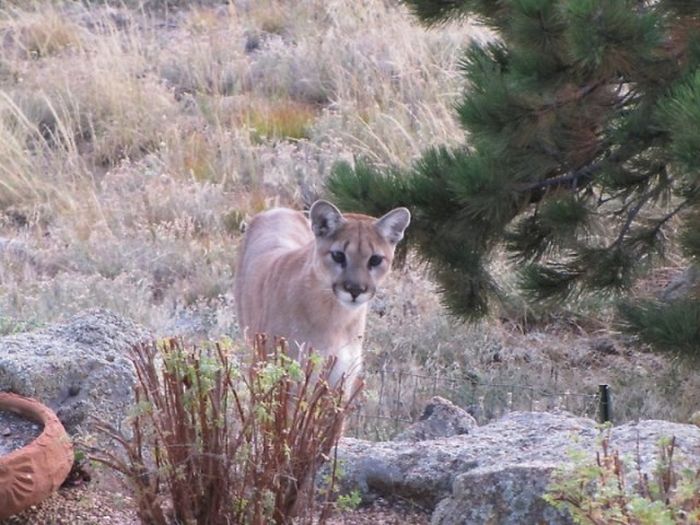|
|
Mountain Lion And Cat
|
A successful generalist predator, the cougar will eat any animal it can catch, from insects to large ungulates (over 500 kg). Like all cats, it is an obligate carnivore meaning it needs to feed exclusively on meat to survive. The mean weight of vertebrate prey (MWVP) was positively correlated (r=0.875) with puma body weight and inversely correlated (r=-0.836) with food niche breadth in all America. In general, MWVP was lower in areas closer to the Equator. Its most important prey species are various deer species, particularly in North America; mule deer, white-tailed deer, elk, and even large moose are taken by the cat. Other species such as Bighorn Sheep, wild horses of Arizona, domestic horses, and domestic livestock such as cattle and sheep are also primary food bases in many areas. A survey of North America research found 68% of prey items were ungulates, especially deer. Only the Florida Panther showed variation, often preferring feral hogs and armadillos.
Investigation in Yellowstone National Park showed that elk, followed by mule deer, were the cougar's primary targets; the prey base is shared with the park's gray wolves, with whom the cougar competes for resources. Another study on winter kills (November–April) in Alberta showed that ungulates accounted for greater than 99% of the cougar diet. Learned, individual prey recognition was observed, as some cougars rarely killed bighorn sheep, while others relied heavily on the species.
In the Central and South American cougar range, the ratio of deer in the diet declines. Small to mid-size mammals are preferred, including large rodents such as the capybara. Ungulates accounted for only 35% of prey items in one survey, approximately half that of North America. Competition with the larger jaguar has been suggested for the decline in the size of prey items. Other listed prey species of the cougar include mice, porcupine, and hares. Birds and small reptiles are sometimes preyed upon in the south, but this is rarely recorded in North America. Not all of their prey is listed due to their large range.
Though capable of sprinting, the cougar is typically an ambush predator. It stalks through brush and trees, across ledges, or other covered spots, before delivering a powerful leap onto the back of its prey and a suffocating neck bite. The cougar is capable of breaking the neck of some of its smaller prey with a strong bite and momentum bearing the animal to the ground.
|
|









